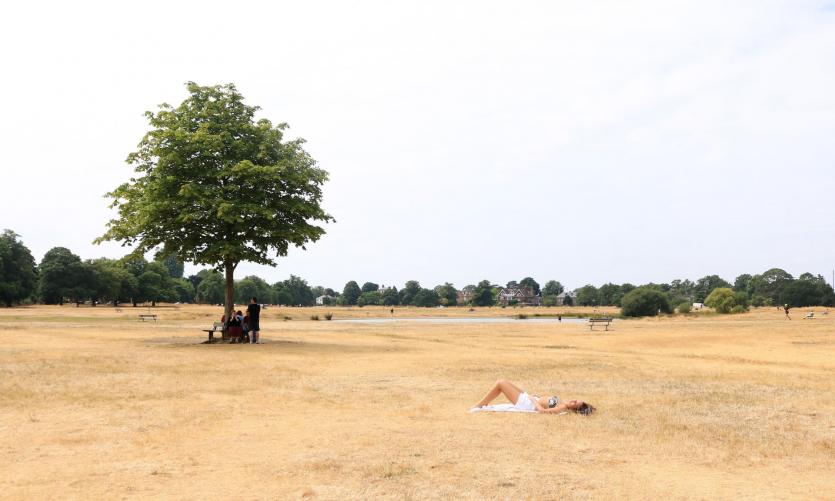A woman sunbathes on the burnt dry grass on Wimbledon Common in London, caused by a prolonged summer heatwave, July 2918. Photograph: Amer Ghazzal/REX/Shutterstock/Amer Ghazzal/Rex/Shutterstock
 NOVEMBER 3rd 2018
NOVEMBER 3rd 2018
UK Heat Waves are Only Getting Longer and Longer
According to the Met Office, at the present moment in time, the heatwaves across the UK that had occurred this Summer had reportedly lasted twice as long as they had 50 years ago. Along with this, icy days and snowfall are growing gradually more and more uncommon, as the world’s climate becomes more extreme.
The cause for such drastic rises in temperatures, additionally, and to nobody’s surprise, is the human-caused emission of carbon dioxide and greenhouse gasses. This adds up to many other study and research papers done by many other groups and companies, and many fear and know that this may only grow to become worse, as tropical nights are becoming more frequent as well.
“Monthly, seasonal and annual climate data provide a valuable record of the changing climate in the UK,” says the manager of the National Climate Information Centre, Mark McCarthy, “However, these average figures have a tendency to mask extreme weather and climate events. So in our latest report we have focussed on those measures which record weather extremes.”
Another issue pointed out by the report is the fact that the heatwaves are not only lasting twice as long, but also occur far more often, and that the tropical nights – According to McCarthy – whilst still not necessarily common, are bound to become more so as well, saying “With projections in climate suggesting warmer temperatures, it is useful to have this metric in place so that future changes can be monitored.”
On average, the longest heatwaves each year were 5.3 days, between the years of 1961 to 1990. This has visibly increased since then, as the statistics of 2008 to 2017 show, rounding at about 13.2 days, more than double what they once were. Apparently, there was a recorded day, not included in the statistics, with a heatwave lasting longer than 17 days.
The measurements for the aforementioned ‘tropical nights’ are based off night-time periods where the temperatures remain above 20 degrees Celsius. They’re being recorded in London, Kent, the Isle of Wight and even occasionally in Wales, and have been since the year 1995. They’re known to be an especially large problem for the elderly, who suffer as a cause of such hot night-time temperatures the most. Apparently, such nights weren’t even known to occur in the famous British hot summer of 1976.
It is becoming clear that with the hottest days of the year growing to be higher, the coldest days grow warmer as well, though the hot and cold extremities are, oddly enough and to McCarthy’s surprise, shifting at different rates. Between 1961 and 1990, the average coldest winter nights were around -8.5C. From 2008 to 2017, however, the results were around -6.8C.
Since the earlier days of the pre-2000s, there has also been a significant drop in the number of ‘Icy days’ in the UK, with a confirmed metric having shown a drop in the average number of days every year that emit freezing temperatures. The drop had apparently gone from 4.8 to 3.2.
The report is just another reminder of the problematic climate change, and the UN’s recent warnings about it. The United Nations warned, specifically, that if the global temperature rise isn’t limited to 1.5C over the course of the next 12 or so years, many problems and catastrophes could surface, from increased droughts and flooding, to the destruction of coral reefs and more radical heatwaves.
By Patryk Krych | The World Daily






